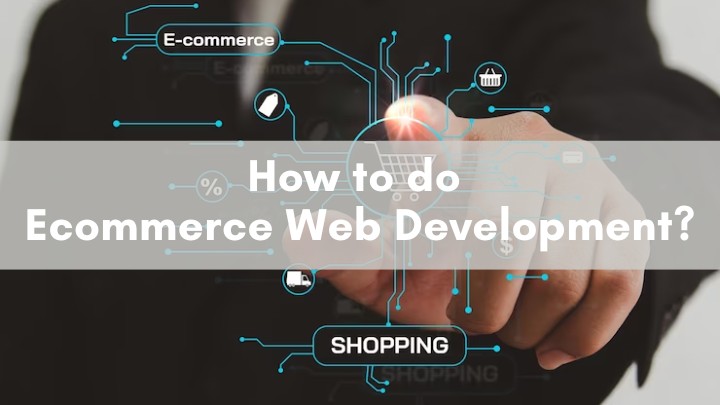
E-commerce stands for Electronic commerce.
In simple terms, it means buying and selling anything via an online platform. Apart from physical product, you can also sell service like training, consultation, and many other things to your customers. In today’s digital age, having an e-commerce presence is critical for each and every businesses. It helps to succeed and grow their revenue. However, before talking about this, it’s essential to understand the key factors of the domain of online business.
The process involves several important decisions, such as choosing the right ecommerce platform, designing a user-friendly website, easy navigation, simple and smart UI/UX, optimizing for search engines, offering secure payment and shipping options, and ongoing maintenance.
This detailed blog article will explore the critical things to know before starting B2B e-commerce website development. By understanding these parameters, businesses can make informed decisions and create such website that caters to their target market, delivers a seamless shopping experience, and maximizes sales. So, let’s dive in and discover the crucial elements.
1. Know your target market
Before starting e-commerce web development, knowing your TG (target market) is crucial. It means understanding the demographics, preferences, and pain points of the customers you want to attract. This information is essential for creating a website that meets the needs of your target market and delivers a seamless shopping experience.
Conducting market research is the best way to understand your target market. It involves collecting and analyzing your target audience’s age, gender, income, location, and shopping habits. Doing this lets, you identify customer pain points, preferences, and buying behavior. This information can be used to create a buyer persona that represents your target audience.
Identifying customer pain points and preferences is essential for customizing your web portal and app to cater to your target market. For example, if your target audience is older adults, design a website that is easy to navigate, with larger fonts and clear call-to-action buttons. On the other hand, if your target audience is millennials, you should focus on social media integration and a mobile-friendly design.
Customizing the website to cater to your target market can help increase conversions and sales. In addition, you can build trust and loyalty by delivering a personalized shopping experience that meets your customers’ needs. This can lead to repeat business and positive word-of-mouth marketing.
In conclusion, knowing your target market is critical. Businesses can customize their web portal and app to cater to their target market by researching and identifying customer pain points and preferences. This can lead to increased conversions, sales, and customer loyalty.
2. Choosing the right E-commerce platform
Choosing the right ecommerce platform is crucial for the success of your online business. Several popular e-commerce platforms are available, such as Shopify, WooCommerce, Magento, and BigCommerce. However, each platform has its strengths and weaknesses, and it’s essential to consider several factors before deciding.
Customization options and flexibility are critical factors when choosing such platform. You want to select a platform that allows you to customize your website’s design and functionality to meet your business needs. Some platforms offer more flexibility, so evaluating your business requirements is important before selecting a platform.
Scalability and the ability to handle high traffic and sales are other essential factors to consider. As your business grows, you’ll need a platform that can handle increased traffic and sales without compromising performance. You need to do detailed analysis of Native Vs Hybrid Vs Cross-platform. Some platforms offer more scalability options than others, so it’s important to consider your future growth plans when selecting a platform.
Security features and payment gateway are other critical factors to consider. Your e-commerce platform should have robust security features that protect your customers’ data and prevent unauthorized access. Additionally, you want to select a platform that offers multiple payment gateway options to ensure your customers have various payment options.
In conclusion, choosing the right ecommerce platform is a critical decision for your online business. When evaluating these, it’s important to consider customization options, flexibility, scalability, security features, and payment gateway options. By selecting an e-commerce platform that meets your business needs, you can build a successful online business and deliver a seamless shopping experience to your customers.
3. Better UI and UX

A well-designed e-commerce website delivers a positive user experience and increases conversions. Design elements that impact user experience include mobile responsiveness and optimization, easy navigation, intuitive layout, and product display and descriptions.
Mobile responsiveness and optimization are critical design elements, considering the increasing number of users who shop on mobile devices. Therefore, it should be optimized for mobile devices to ensure a seamless shopping experience for mobile users.
Easy navigation and an intuitive layout are essential for guiding users through it and helping them find what they’re looking for quickly. In addition, a clear and organized menu structure and easy-to-use search function are essential to design elements that can impact the user experience.
Product display and descriptions are other important design elements that can impact user experience. Your product pages should have high-quality images and detailed descriptions to help customers make informed purchase decisions.
In conclusion, a well-designed portal delivers a positive user experience and increases conversions. Design elements that impact user experience include mobile responsiveness and optimization, easy navigation, intuitive layout, and product display and descriptions. By prioritizing these design elements, you can create a seamless and enjoyable shopping experience for your customers and increase the success of your ecommerce business.
4. Content research and Search Engine Optimization
The content plays a crucial role in attracting and retaining customers. It includes product descriptions, images, blogs, and other informational pages. Quality content helps engage customers and aids in search engine optimization (SEO). SEO is optimizing the website to rank higher in search engine results pages (SERPs). It helps in increasing the visibility of the website and attracting more traffic.
Creating quality product descriptions and images is important for both customers and search engines. Customers rely on these to make informed purchase decisions, while search engines use them to understand the website’s content. Optimizing product titles and meta tags with relevant keywords can improve the website’s visibility in SERPs. Building backlinks from reputable websites and establishing a social media presence can also help improve SEO.
In conclusion, content and SEO are important factors to consider when building an e-commerce website. Creating quality content and optimizing it for search engines can not only help in attracting more traffic but also aid in increasing conversions and revenue.
5. Payment and shipping options
Choosing the right payment and shipping options is crucial for the success of your web portal. Integrating payment gateways and ensuring secure transactions is important for building customer trust. Offering multiple shipping options and tracking tools can improve the customer experience and increase satisfaction. It’s also important to have a clear and concise return and refund policy in place to handle any issues that may arise.
Take the time to research different payment and shipping options to find the ones that work best for your business and your customers. Consider factors such as cost, reliability, and convenience. Providing a smooth, hassle-free payment and shipping experience can lead to repeat business and positive word-of-mouth marketing.
6. Testing and maintenance
After developing an e-commerce website, testing and maintenance are crucial to ensure a seamless shopping experience for customers. Before launch, thorough testing should be conducted to identify and fix any bugs or errors that may arise. User testing and feedback can also be utilized to make necessary improvements.
Once the website is live, ongoing maintenance and updates are necessary to keep it running smoothly. Regularly monitoring website performance and fixing any issues is essential. This includes ensuring website security, optimizing website speed, and keeping up with software updates.
Refrain from testing and maintenance to avoid a poor user experience and potential loss of customers. Therefore, it is important to allocate time and resources to ensure that it is functioning optimally. By doing so, businesses can avoid costly mistakes and maintain a competitive edge in the online marketplace.
Conclusion
E-commerce web development is a critical process that requires careful planning and research to ensure success. Understanding the key factors, such as target market, platform, design, content and SEO, payment and shipping options, testing, and maintenance, and choosing the right B2B e-commerce software solutions, before beginning it can save time and save time and money, and ensure success.
